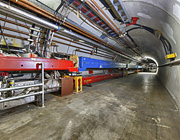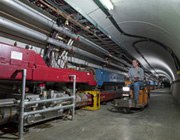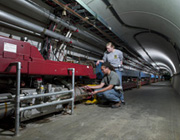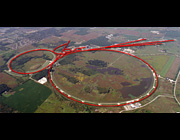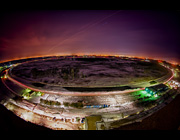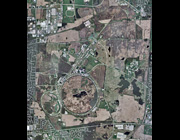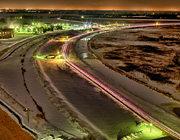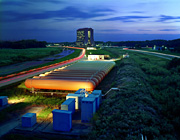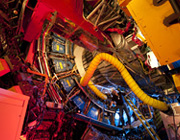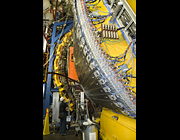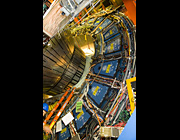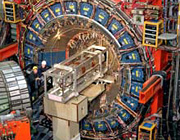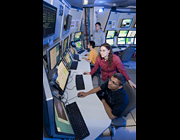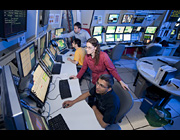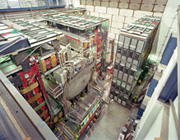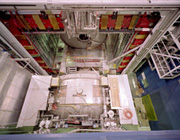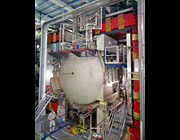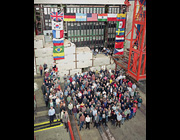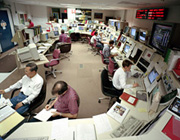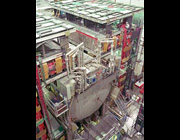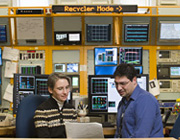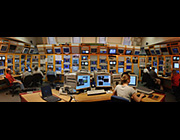Media
Media Contacts
Fermilab Office of Communication
+1 630 840 3351, media@fnal.gov
Fact Sheets
Images
The 4-mile in circumference Tevatron accelerator uses superconducting magnets chilled to minus 450 degrees Fahrenheit, as cold as outer space, to move particles at nearly the speed of light.
The Tevatron typically produces about 10 million proton-antiproton collisions per second. Each collision produces hundreds of particles. About 200 collisions per second are recorded at each detector for further analysis.
As of July 2011, CDF has analyzed more than 8 inverse femtobarns of collision data while DZero has scrutinized up to 9 inverse femtobarns. The collaborations anticipate accumulating a total of 10 and 11 inverse femtobarns of data, respectively, by the time the Tevatron shuts down at the end of September. One inverse femtobarn represents about 50 trillion proton-antiproton collisions at the Tevatron.
The three-story, 6,000-ton CDF detector takes snapshots of the particles that emerge when protons and antiprotons collide. The CDF collaboration consists of about 500 members from 63 institutions in 15 countries.
Scientists measure the energy, momentum and electric charges of subatomic particles using a three-story assembly of sub detectors wrapped around DZero?s collision area like the layers of an onion. About 500 physicists from 90 institution in 18 countries work on DZero.
Accelerator operators working 24-hours-a-day maintain a "sweet spot" level of protons and antiprotons and steer them through a chain of seven accelerators, culminating in the Tevatron ring, that increase the speed of the particles like gears on a car. The system creates and contains for the longest amount of time the most antimatter in the world.
- Last modified
- 04/15/2022
- email Fermilab


